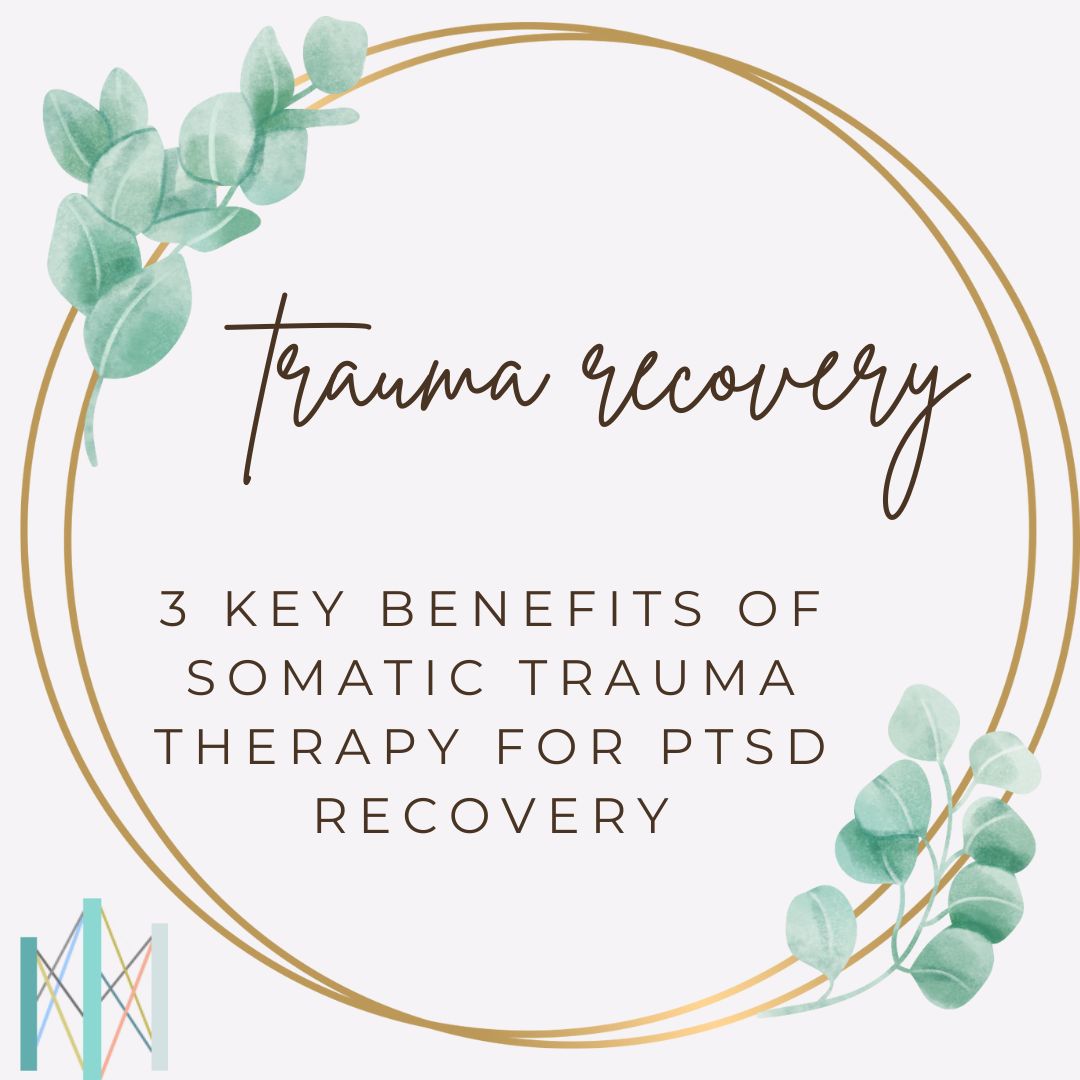

Post-Traumatic Stress Disorder (PTSD) affects individuals differently. Therefore, the therapeutic approaches required by each person will be unique. However, Somatic Trauma Therapy offers valuable support for many people. This article examines a bit about what PTSD is and why somatic therapy can be a good option.
Understanding Complex Trauma and PTSD
Complex Trauma (C-PTSD) and Post-Traumatic Stress Disorder (PTSD) both stem from experiencing traumatic events, but they differ in crucial ways. While PTSD typically results from a single traumatic incident, complex trauma arises from prolonged exposure to severe and distressing events, often within the context of interpersonal relationships. These repeated traumatic experiences during childhood or early development can deeply affect one’s psychological, emotional, and social development.
Learn more about PTSD and CPTSD here.
Symptoms of C-PTSD/PTSD
Symptoms of both complex trauma and PTSD may overlap, including intrusive memories, emotional dysregulation, avoidance, and changes in interpersonal functioning. However, complex trauma tends to have a broader impact on identity, relationships, and overall psychological development. Recognizing these distinctions is vital in tailoring effective therapeutic interventions.
Co-occurring Mental Health Challenges
Individuals with complex trauma and PTSD often experience co-occurring mental health conditions, such as depression, anxiety disorders, dissociative disorders, substance use disorders, personality disorders, eating disorders, sleep disorders, and self-harm tendencies. These challenges underscore the need for comprehensive and integrated treatment approaches.

3 Key Benefits of Somatic Trauma Therapy for PTSD Recovery
Somatic trauma therapy recognizes that trauma is not just stored in memories and thoughts but also in the body itself. Through the lens of somatic therapy, traumatic experiences are seen as stored sensations, emotions, and physiological responses. By engaging the body in the therapeutic process, somatic trauma therapy provides a holistic approach to healing, addressing both the psychological and physiological aspects of trauma.
Restoring Energy Flow
Trauma disrupts not only our mental and emotional well-being but also our physiological state. When we experience trauma, whether it’s a single incident or prolonged exposure to distressing events, our body’s natural rhythm of alertness and rest is thrown off balance. This disruption often manifests as physical tension, chronic pain, and a sense of being stuck or overwhelmed by emotions.
Somatic therapy offers a unique approach to healing by addressing the physiological aspects of trauma. Unlike traditional talk therapy, which focuses primarily on the mind, somatic therapy recognizes that trauma is stored not just in memories and thoughts but also in the body itself. Through techniques such as body awareness, movement, and breathwork, somatic therapists help individuals release the trapped energy and restore the natural flow within.
As individuals engage in somatic practices, they gradually release the tension and constriction that have built up as a result of trauma. This newfound freedom of movement allows energy to circulate freely once again, revitalizing the body and mind. With each session, individuals may experience a gradual easing of physical symptoms, such as muscle tension or digestive issues, as the blocked energy is released and dispersed.
Empowering Self-Healing
The human body possesses a remarkable ability to heal itself, given the right conditions and support. However, trauma can disrupt this natural healing process, leaving individuals feeling disconnected from their body’s innate wisdom. Somatic therapy seeks to re-establish this connection by guiding individuals to tune into their bodily sensations and emotions, thereby facilitating the release of pent-up energy and unresolved trauma.
Central to somatic therapy is the belief that healing comes from within. Rather than relying solely on external interventions, somatic therapy encourages individuals to become active participants in their own healing journey. Through practices such as body scanning, movement, and expressive arts, individuals learn to listen to their body’s signals and respond with compassion and curiosity.
As individuals engage in somatic practices, they gain insight into the ways in which trauma has impacted their body and psyche. By reconnecting with their bodily sensations and emotions, guided by therapeutic support, individuals can release pent-up energy and resolve traumatic experiences. This process of self-discovery not only facilitates healing but also empowers individuals to navigate adversity and move forward with greater resilience.
Restoring Trust and Presence
Trauma shakes the very foundation of our sense of safety and trust, leaving individuals feeling vulnerable and guarded. Whether it’s betrayal, abandonment, or loss, traumatic experiences can deeply impact our ability to trust ourselves and others. This erosion of trust can manifest as hypervigilance, avoidance, and difficulty forming meaningful connections.
Somatic therapy provides a safe and supportive environment for individuals to explore their relationship with trust and presence. Through gentle body-centered techniques, somatic therapists guide individuals to reconnect with their bodily sensations and emotions, fostering a sense of safety and grounding. As individuals learn to trust the wisdom of their body, they can begin to let go of the armor they’ve built up in response to trauma and embrace a deeper sense of presence and authenticity.
Central to somatic therapy is the idea of restoring inner stability and resilience. As individuals engage in somatic practices, they learn to discern what is safe and what isn’t, enabling them to navigate the world with greater clarity and confidence. With each session, individuals may experience a gradual softening of their defenses, allowing them to reconnect with themselves and others in a more authentic and open-hearted way.

